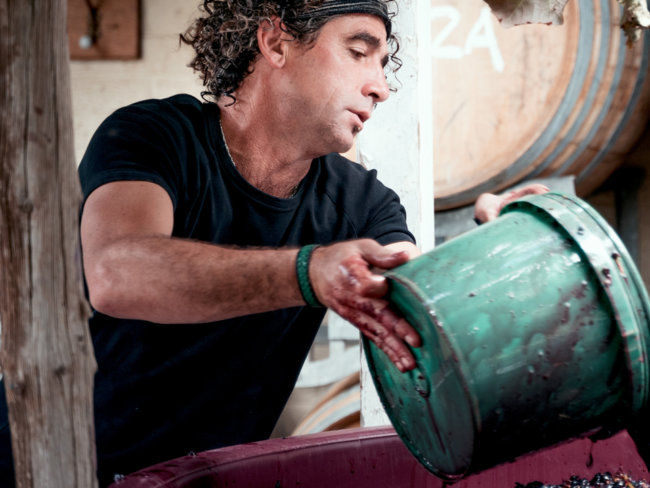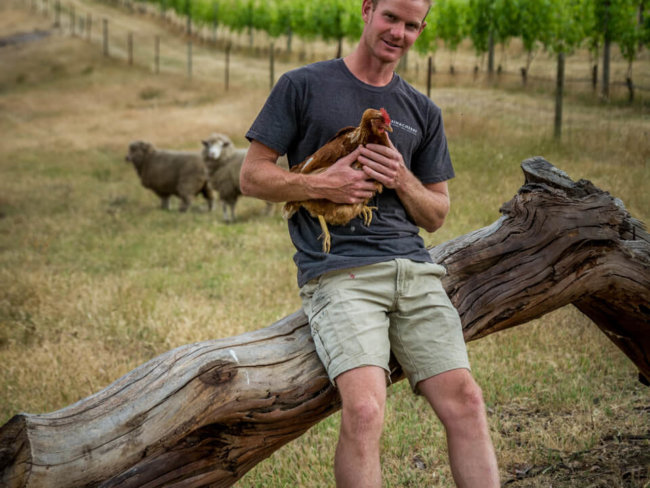At a time when the Barossa was very much still set in its ways, with high ripeness, glossy oak and power the order of the day, Pete Schell was quietly but firmly rattling the dominant paradigm with his Spinifex wines. And this was long before some of today’s most recognisable iconoclasts had even thought about turning grapes to wine. With a reference point to France’s southern viticultural zones, Schell saw a future for the Barossa, or at least for himself in the Barossa, with wines that captured the guttural power of the place, but did so in a measured way, trading in brutality for detail, opulent richness for texture, and sweetness for savoury complexity. Blends were key then, with Mediterranean varieties bonding across white, rosé and red wines. Today, those wines are joined by a phalanx of single-site offerings. Schell was crowned the Young Gun of Wine for 2008.
Pete Schell and his wife and partner in wine, Magali Gely, are not Barossan by birth, having met in Schell’s native New Zealand back in the dawn of the 1990s; she hails from Montpellier, in the Languedoc, with a string of winemaking ancestors lined up behind her. They have worked together extensively in France, but predominantly in the south, which informs the Mediterranean varieties that are championed at Spinifex.
Schell studied at Roseworthy, before tackling six vintages in France over a decade, with a winemaking stint at Barossa stalwart Turkey Flat leading to the first tentative steps towards establishing Spinifex. That was in 2001, with Schell expanding the project over the years to focus on micro plots of vines that spoke to him in one way or another. These were often parcels of significantly mature vines, and included some of the unloved varieties in the Barossa, including muscat blanc à petit grains, semillon, ugni blanc and cinsault, along with the regional hero, shiraz.
Although Schell represented the ‘new’ Barossa when Barossa was overwhelmingly still the ‘old’ Barossa, his was never an attempt to bend region to style, but rather to tease out a different expression as informed by his experience in the warm winegrowing territories that hug the Mediterranean. To that end, blending was key, and his skills as a taster and blender are somewhat legendary. Although production is typically small, Schell plays a complex game of oenological Tetris, slotting parcels of wine into a harmonious whole, leaving no blank squares on the grid.
Today, the complex mosaic of grower sites that form an ever more complex matrix of options for Schell has been joined by the property he and Gely bought a few years back in the Flaxman’s Valley, in the cool of the Eden Valley. That site is made up mostly of shiraz and a small parcel of riesling, with vines dating back to 1956, which are made into varietal bottlings. They’re joined by other single-site mono-varietal wines, including tempranillo, vermentino, clairette and aglianico, as well as white, rosé and red blends, and even a non-vintage solera wine.





